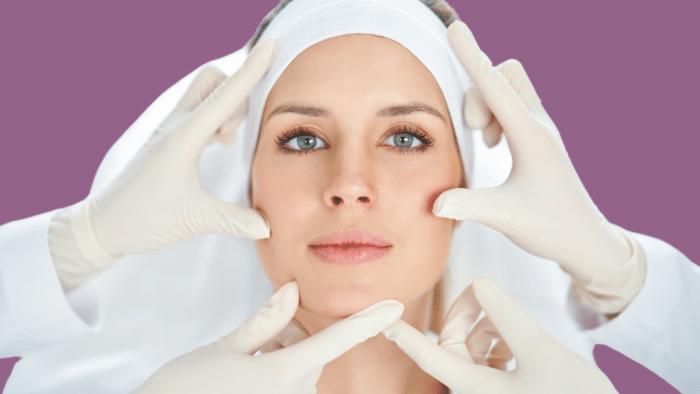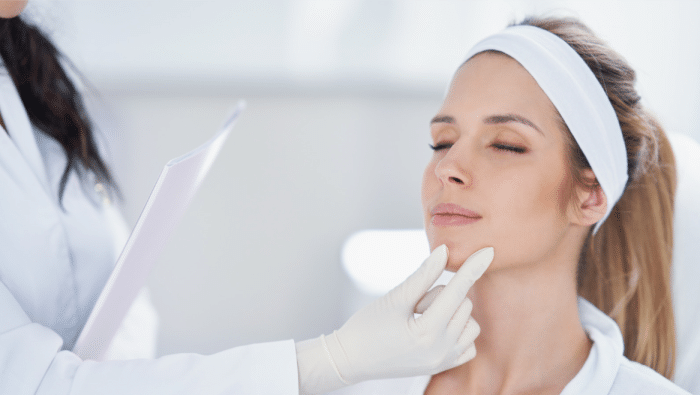Only for Licensed Professionals
Only for Licensed Professionals

Botox Don’ts: 5 Things to Avoid Before Your Treatment
David Fuller
Last Updated On: August 15, 2024
According to the Mayo Clinic, Botox has become a pivotal treatment for those experiencing headaches 15 or more days per month. This multifaceted application underscores the necessity of understanding Botox treatments’ potential and limitations, including the importance of preparation and adherence to pre-treatment guidelines to maximize benefits and minimize risks.
As you consider Botox, whether for cosmetic enhancement or medical relief, it’s crucial to have realistic expectations and to be aware of how changes might affect you internally. Understanding the risks, how to prepare, and what to expect during and after the procedure is fundamental to achieving a satisfactory outcome.
This article will discuss the critical aspects to avoid before your Botox treatment, aiming to provide you with the knowledge necessary for a safe and effective procedure.
Key Takeaways
- Before undergoing Botox treatment, avoid blood-thinning medications and supplements, alcohol, and engaging in strenuous exercise to minimize the risk of bruising and swelling.
- Pre-treatment care includes halting the use of retinol or other skin irritants and avoiding facial treatments or massages to ensure optimal results and prevent the spread of Botox to unintended areas.
- Choosing a qualified and experienced practitioner and discussing any medications or supplements you take are crucial for a safe and effective Botox treatment.
- Proper preparation also involves adopting a gentle skincare routine and planning your schedule to accommodate any potential side effects or downtime post-treatment.
- When considering Botox, the question of “What age to start” is common. While there’s no one-size-fits-all answer, individuals typically begin considering Botox in their late 20s to early 30s as a preventive measure against fine lines and wrinkles. However, the decision ultimately depends on individual skin concerns, lifestyle factors, and consultation with a qualified healthcare professional.
Understanding Botox Pre-Treatment Care

The Basics of Botox and Its Procedure
Botox, a popular cosmetic and medical treatment, is best known for temporarily reducing the appearance of facial wrinkles. It blocks nerve signals to the muscles where it’s injected, preventing them from contracting, which helps smooth out dynamic wrinkles caused by expressions.
The effects of Botox are not immediate and can take several days to become noticeable. Usually, improvement is seen within three to five days, with the full impact visible after 10 to 14 days. Results typically last three to six months, necessitating follow-up treatments to maintain the desired appearance.
Selecting a qualified practitioner is crucial for a safe and effective Botox treatment. It’s recommended to seek out board-certified dermatologists or plastic surgeons with extensive experience in facial aesthetics and Botox injections. Patient satisfaction and safety significantly depend on the provider’s expertise and understanding of facial anatomy.
How Pre-Treatment Activities Can Affect Botox Outcomes
There are several precautions and preparations patients should consider before undergoing Botox injections to ensure optimal results and minimize the risk of complications. These include:
- Avoid alcohol and certain medications and supplements that can thin the blood, such as ibuprofen, naproxen sodium, fish oil, and vitamin E, for at least 24 hours before the procedure. These substances can increase the risk of bleeding or bruising at the injection site.
- Steering clear of facial treatments, like chemical peels, waxing, threading, or laser hair removal, for at least two weeks before your Botox appointment.
- Adopting a gentle skincare routine to minimize the risk of irritation and ensure the skin is in optimal condition for the procedure.
Don’t 1: Blood-Thinning Medications and Supplements
List of Common Blood Thinners to Avoid
Before receiving Botox injections, it’s important to discontinue using blood-thinning medications and supplements to reduce the likelihood of bruising and swelling. Common substances to avoid include aspirin, ibuprofen (found in products like Motrin and Advil), and vitamin E.
Ideally, stop using them ten days before aspirin and five days before ibuprofen and vitamin E. If you’re prescribed any of these medications, you must consult your doctor before making any changes.
The Impact on Bruising and Swelling
Blood thinners can increase the risk of bruising and swelling at the injection site, potentially complicating the healing process and affecting the appearance of Botox results. By avoiding these substances, patients can minimize such risks and improve the overall success of their Botox treatment.
While bruising is generally not a severe issue with neuromodulator injections, adhering to these precautions can help ensure a smoother recovery and more satisfactory outcomes.
Don’t 2: Alcohol Consumption
The Effects of Alcohol on Botox Treatments
Alcohol can adversely affect the outcome of Botox treatments in several ways. It acts as a vasodilator, expanding blood vessels and increasing blood flow, leading to a higher risk of bruising and swelling at the injection sites. Additionally, alcohol has blood-thinning properties that, combined with Botox, heighten the chances of bruising and can potentially alter the results of the treatment.
Moreover, alcohol can dehydrate the skin, prolonging the recovery process and potentially diminishing the dramatic effect you might be expecting from your Botox treatment.
Recommended Timeframe for Avoiding Alcohol
It is generally recommended to avoid alcohol for at least 24 hours before and after your Botox appointment to minimize the potential adverse effects of alcohol on Botox treatments. However, for the best possible outcomes and to further reduce the risk of side effects like bruising and swelling, extending this period to 48 hours or more is advised.
Don’t 3: Engaging in Strenuous Exercise
How Physical Activity Can Influence Botox Absorption
Engaging in strenuous physical activity shortly after receiving Botox injections can increase heart rate and blood flow, potentially spreading the Botox to unintended areas. This dispersion can decrease the effectiveness of Botox and cause unwanted side effects. Strenuous exercise post-treatment might also elevate the risk of swelling and bruising around the treated areas, affecting the overall outcome of the procedure.
Guidelines on Exercise Before Treatment
For those looking to maintain their workout routines, it’s essential to time exercises appropriately concerning Botox treatments. While light activities such as leisurely walking might be safe, avoiding heavy exercises like using Ellipticals or engaging in Nordic tracks for at least 24 hours following Botox injections is advisable.
This precaution helps ensure that the Botox remains localized to the targeted muscles, maximizing effectiveness and reducing the likelihood of spreading and consequent side effects.
Don’t 4: Using Retinol or Other Skin Irritants
The Interaction Between Skin Care Products and Botox
Botox and Retinol serve different but complementary roles in skincare. Botox works by temporarily paralyzing muscles to reduce the appearance of wrinkles, primarily those caused by muscle movement. Retinol, a vitamin A derivative, enhances skin cell turnover, boosting collagen production and skin elasticity to reveal fresher, smoother skin.
While Botox addresses dynamic wrinkles (formed from facial expressions), retinol improves skin texture and tone. Therefore, combining these treatments can offer synergistic benefits, improving dynamic and static wrinkles and overall skin health. However, specific precautions related to retinol and other potentially irritating skincare products are advisableto ensure the best outcomes from Botox treatments.
Safe Skincare Practices Pre-Treatment
It’s recommended to pause retinol, Retin-A, other retinoids, and products containing glycolic acid at least two days before undergoing Botox injections. This is to minimize potential complications and maximize Botox treatment effectiveness; these substances can irritate the skin and may adversely affect treatment outcomes.
Resuming their use is generally safe after the effects of Botox are fully realized, typically a few days post-treatment, but always consult with your provider for personalized advice.
Don’t 5: Getting a Facial or Massage
Why Facial Treatments and Massages Can Be Detrimental
Facial treatments or massages right before or after Botox injections can interfere with the treatment’s success. Strenuous manipulation of the face could spread Botox to unintended areas, reducing its efficacy and leading to unintended effects. Additionally, specific facial treatments might cause skin irritation or inflammation, complicating the healing process or settling Botox into the targeted muscles.
Timing Your Skincare Treatments Around Botox
It’s advisable to avoid scheduling any facial treatments or massages for at least 24 to 48 hours after your injections to ensure the best possible results from your Botox treatment. This precaution helps prevent unwanted product spreading and ensures the treated area remains undisturbed, allowing the Botox to work as intended.
Always consult your healthcare provider for tailored advice, particularly regarding when it’s safe to resume other skincare treatments following Botox injections.
Additional Pre-Treatment Tips

What You Can Do to Prepare for Botox
Preparing for your Botox treatment involves a few essential steps to ensure you get the best results and minimize potential side effects. Considering what age to start Botox is also crucial, as individual needs and the appearance of fine lines and wrinkles vary. Here’s what you can do:
- Choose the Right Practitioner: It is crucial to select an experienced, board-certified provider. They should deeply understand facial anatomy to administer Botox safely and effectively. A consultation will help you gauge their expertise and ensure you feel comfortable with their approach.
- Discuss Medications: Before your appointment, discuss any medications, supplements, and herbal remedies you take with your physician. You may need to pause specific prescriptions and over-the-counter medicines like aspirin and ibuprofen at least four days before your treatment.
- Facial Prep: Avoid chemical peels, tanning, and facials. Using arnica topically may help reduce bruising, and it’s recommended to ice your face before and after the treatment to minimize swelling.
- Plan Your Schedule: While most can resume daily activities post-treatment, it might be wise to take it easy immediately, especially if it’s your first time. Schedule your Botox at least a couple of weeks before any major events to allow any bruising to subside.
- Exercise in Advance: You should avoid strenuous exercise for at least four hours after your Botox treatment. Consider fitting in a workout before your appointment.
Managing Expectations and Consultation Advice
Understanding the timeline and post-treatment process is also essential:
- Know Your Timeline: It’s advisable to have a few weeks to prepare for your treatment. This gives you ample time for consultations, to ask questions, and to choose the right practitioner. It also allows you to research the treatment and its potential side effects thoroughly.
- Post-Treatment Expectations: Most people are ready for their appointments within two weeks of their consultation. However, suppose you’re using Botox for a specific area or condition. In that case, your provider can advise you on the best time for your treatment.
- Understand the Process: Having realistic expectations and a clear understanding of the Botox process is essential. A good practitioner will outline what you can expect during and after the treatment, including any side effects or downtime.
Following these guidelines and working closely with your provider can ensure a safe and effective Botox experience. Always remember that the success of your treatment depends as much on the preparation and aftercare as on the skill of your practitioner.
Conclusion
Preparing for a Botox treatment involves several crucial steps to ensure the best possible outcomes and minimize risks. Avoiding certain medications, substances, and activities before the procedure reduces complications such as bruising and swelling. It’s also vital to select a qualified practitioner and discuss any concerns or medications beforehand.
By following these guidelines, patients can maximize the effectiveness of their Botox treatment and enjoy a smoother, more satisfactory experience.
About: Established in 2016, Med Supply Solutions has built a strong reputation as a leading supplier of under eye and lip fillers, along with premium Botox wrinkle remover products. Their competitive pricing model not only bolsters profitability for medical practices but also optimizes resource utilization. Furthermore, each client receives personalized assistance from a dedicated VIP sales agent, ensuring a seamless and comfortable shopping experience for high-quality body contouring and wrinkle removal solutions at an exceptional value.
FAQs
- Can I drink alcohol before my Botox treatment?
It’s recommended to avoid alcohol for at least 24 hours before and after your Botox appointment to reduce the risk of bruising and swelling.
- How long does it take to see results from Botox?
Botox results typically become noticeable within three to five days, with the full effect visible after 10 to 14 days.
- Is it okay to exercise after receiving Botox?
You should avoid strenuous exercise for at least 24 hours after Botox injections to prevent spreading the product to unintended areas.
- Can I use retinol before my Botox treatment?
It’s advised to pause retinol and other potentially irritating skincare products at least two days before your Botox injections to avoid adverse effects on the treatment outcome.
- How often will I need to get Botox injections?
The effects of Botox typically last three to six months, necessitating follow-up treatments to maintain the desired appearance.
References
Mayo Clinic. (n.d.). Mayo Clinic Q and A: Botox for migraines. Retrieved from https://newsnetwork.mayoclinic.org/discussion/mayo-clinic-q-and-a-botox-for-migraines/
Your Best Selves. (n.d.). Can I get Botox while using Retin-A? Retrieved from https://yourbestselves.com/can-i-get-botox-while-using-retin-a
Styles, C. (n.d.). Retinol vs Botox: A guide to preventative treatments. Retrieved from https://camillestyles.com/beauty/retinol-vs-botox-treatments/
Products
Cart
Log In
Newsletter
Subscribe for exclusive offers and updates on new arrivals
Share feedback at:
Working Hours
MON - SUN 9AM to 6PM EST
The Most Popular Brands
Med Supply Solutions
Support
Secure checkout is guaranteed with full adherence to PCI DSS payment standards.
Products listed here are guaranteed authentic and manufacturer-sourced.
Pay easily with trusted providers


*Google and Apple Pay are currently only available via a direct link provided by your account manager.
Copyright 2025. Med Supply Solutions